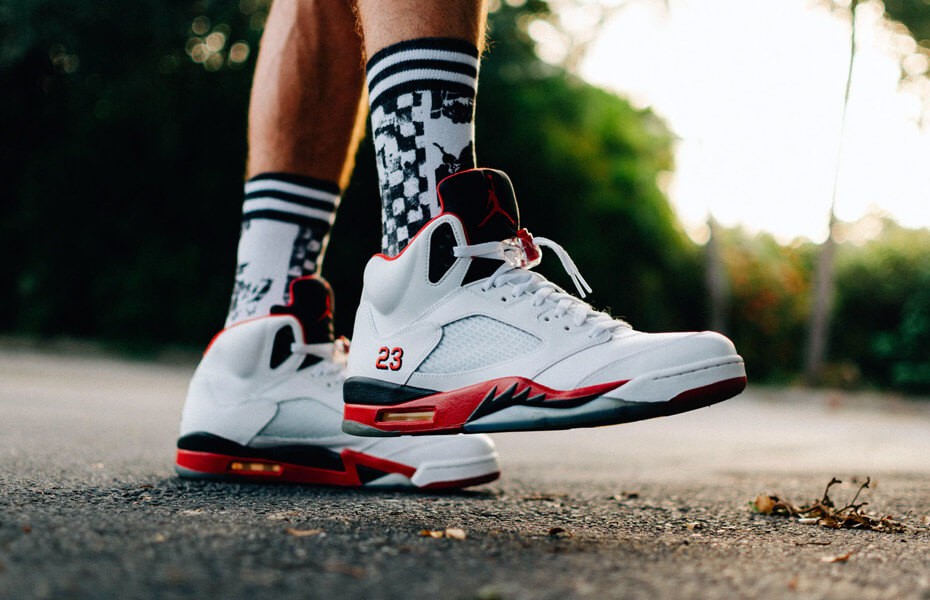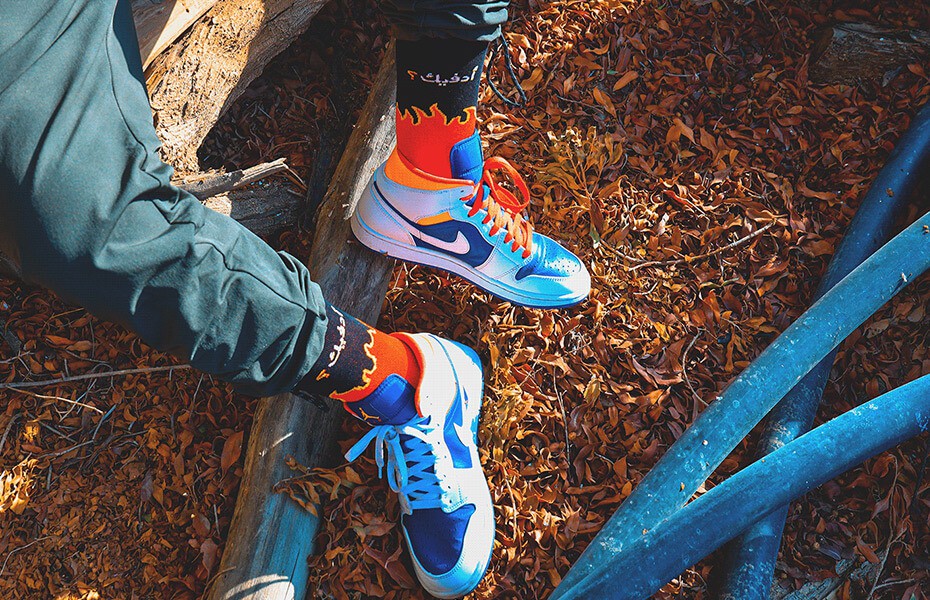
Commonly used sock fibers
The process of making cool novelty socks has come a long way, and new advancements in fiber blending, dyes, manufacturing and more are popping up all the time! Here, you can learn about commonly used fibers, specialty sock-making techniques and interesting industry tidbits.
acrylic
Acrylic is a highly durable man-made fiber that provides softness and warmth with little weight. Acrylic's inherent properties enable it to hold brighter and more brilliant colors than natural fibers.
angora
Angora is the soft hair of an Angora rabbit. Used with other fibers, it provides a lot of comfort and a fluffy look. The rabbits molt their fur, and farmers pluck the hair.
bamboo
Bamboo fibers are taken from the natural, fast-growing plant. Bamboo is softer and more breathable than cotton and has a natural sheen to the surface, so it almost feels like silk or cashmere. Bamboo is hypoallergenic, naturally microbial and very durable, making it a luxury choice for socks.
cashmere
Cashmere is a fiber from the soft hair of a Cashmere goat. It provides natural, light-weight insulation with bulk and is considered a luxury fiber, mostly because of how soft and comfortable it is. Check out our selection of cashmere socks.
coolmax
CoolMax is a brand name of a polyester blend designed to wick moisture away from the skin.
cotton
Cotton is a lightweight, moisture-absorbing fiber. It's breathable, washable and durable, so it is the most common fiber in socks. Because it is so great at absorbing moisture, it is generally blended with nylon, a nonabsorbent material, to help move moisture away from the foot.
If your socks are not labeled as "preshrunk cotton," they are likely to shrink in the wash if you use hot water or a hot dryer cycle. The best way to avoid this is to wash in cold water and drip dry on a line. Learn more about how to care for our different socks.
Cotton is grown all over the world, but droughts, pests and the weather can impact production, sometimes driving up the price. Cotton fiber is gathered from around the seeds of the cotton plant and is 90% cellulose.
Here are some of the specialized kinds of cotton commonly used in the socks we sell:
Organic cotton is grown with non-genetically modified plants, without pesticides and without fertilizers. This method of growing cotton is thought to allow for more biodiversity, benefitting the environment. One sock brand we carry, Zkano, specializes in organic cotton socks. Recycled cotton (recovered cotton) is usually spun from scraps that would have been discarded after the spinning, weaving or cutting processes.
Mercerized cotton is a cotton yarn that is put through an additional finishing process called mercerizing to provide great luster and softness to the yarn and to intensify dyed colors. Combed cotton is treated more than standard cotton to remove short fibers and impurities. The cotton is literally combed, leaving long, straight cotton fibers only. These are wonderful for weaving fabrics, because they don't fray as easily and feel softer against your skin. Generally, combed cotton is more expensive than regular cotton. One of our most popular brands, Stance, specializes in combed cotton blends.
drymax
DryMax is a brand name of specialty Olefin fabric. DryMax fibers are infused with an anti-microbial treatment to stay moisture- and odor-free.
elastane/lycra/spandex
The terms elastane, Lycra and spandex all refer to the same style of synthetic fiber made from polyurethane. Spandex is the commonly used term in the U.S., which was marketed under brand name Lycra, while the term elastane is used worldwide. First produced by DuPont in 1959, the fiber has elastic properties so it is often used in place of rubber. Used with other fibers, it provides elasticity, comfort and a close fit, which makes it a common choice in socks to help them stay up and in the arch and ankle to provide extra support.
elastic
Elastic is a rubber or spandex core covered with nylon to provide extreme stretch.
flax
Flax is one of the oldest fiber crops in the world. Flax fiber is extracted from the skin of the stem of the plant and is very soft, lustrous and flexible. It is stronger than cotton but less elastic.
lurex
Lurex is a synthetic fiber that incorporates a glittering metallic thread. It is often used for detailing in intricate sock patterns.
modal
Modal is a natural fiber, typically made from beech trees. It's more water-absorbent than cotton and holds on to color better.
mohair
Mohair is the long, soft, silky hair of the Angora goat. It is stronger than wool and dyes more easily than any other specialty hair fiber. This makes it a luxury fiber.
nylon
Nylon is a very strong, versatile, hard-wearing fiber. Socks made of nylon can be thin and silky or bulky and highly elastic. Nylon is often used with other fibers in blends to give added stretch or to improve durability.
olefin (polypropylene)
Olefin is a superior water-repelling synthetic fiber that won't accept moisture. In socks, it is commonly used in a blend with absorbent outer layers that work together to wick moisture away from your body. It is very strong, and it is the lightest of any man-made fiber. In 1962, Italian scientists won the Nobel Prize in chemistry for developing the process of making Olefin fibers.
polyester
Polyester and stretch polyester are two hydrophobic (water-repelling) fibers that are known for their durability and are extremely colorfast for vivid coloration.
rayon
Rayon is a natural cellulose filament fiber known for its sheen, its soft feel and its high moisture absorption properties. The term rayon is sometimes used as a generic term for “plant fiber.”
rubber
Rubber latex, which comes from rubber trees, is used in socks for added elasticity and stretch.
silk
Silk is a very smooth, soft and moisture-absorbing fiber. It boasts a high tensile strength and acts as a natural thermal retainer that does not conduct heat. It is woven from the cocoon material of special caterpillars.
wool
Wool from sheep and other animals is the original easy care fiber. Each wool fiber is made up of millions of coiled springs that stretch in use but bounce back to their original positions. Wool naturally has wrinkle resistance, colorfastness and shape recovery, and it breathes with your body. Wool yarn, when knotted into a thicker sock, tends to be bulky and lofty. Air becomes trapped, making wool an ideal insulator. Wool socks also keep feet drier because wool absorbs as much as 30% of its own weight in moisture before it begins to feel damp. Thanks to these properties, wool socks are great for hiking.






Comments
No comment at this time!
Leave your comment